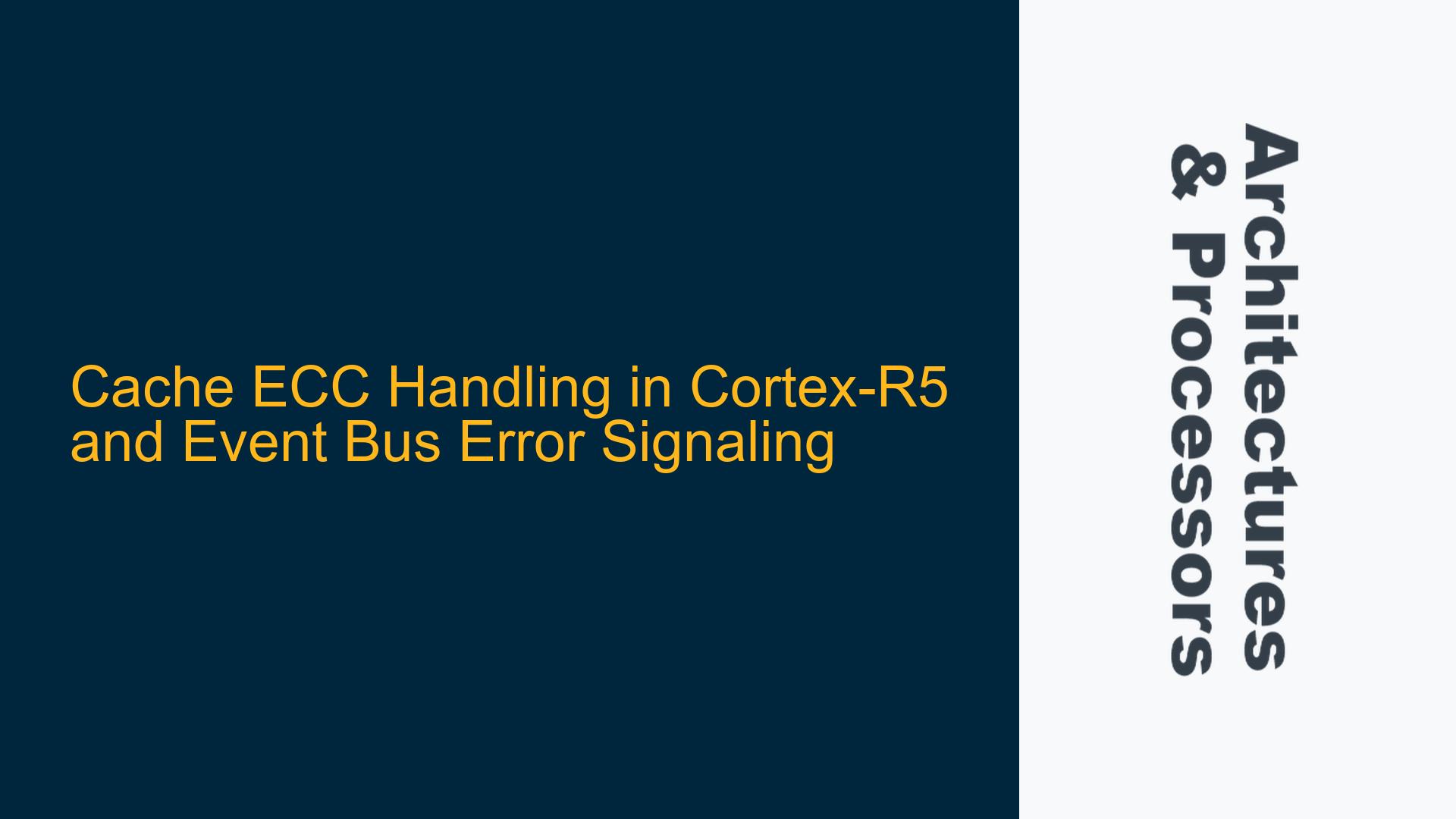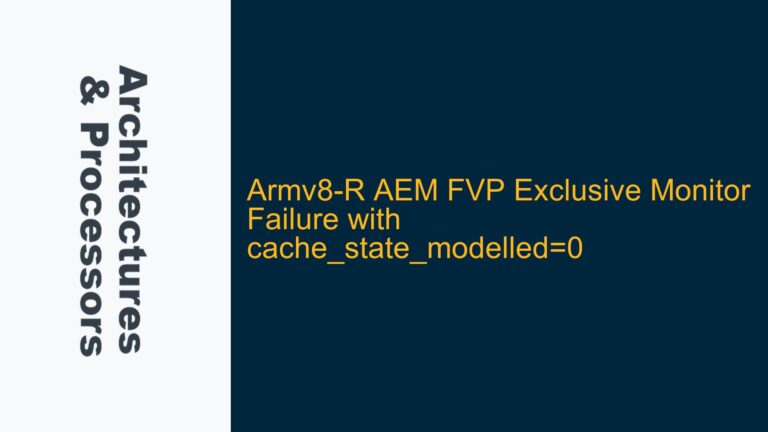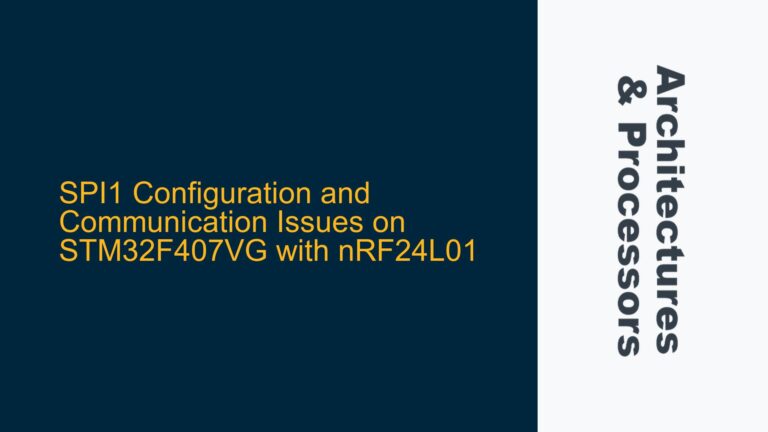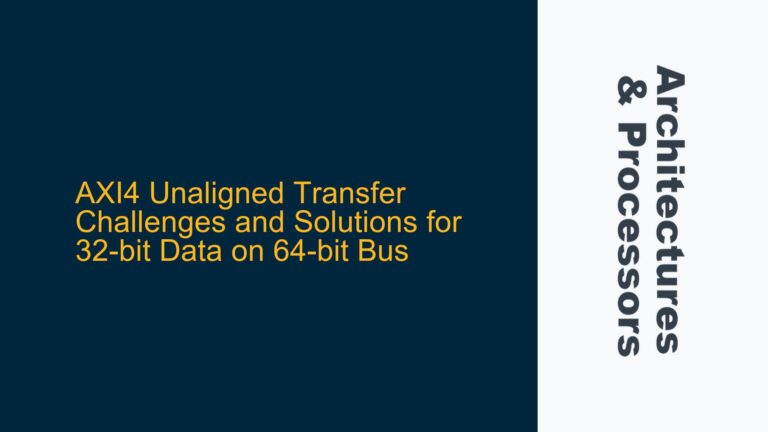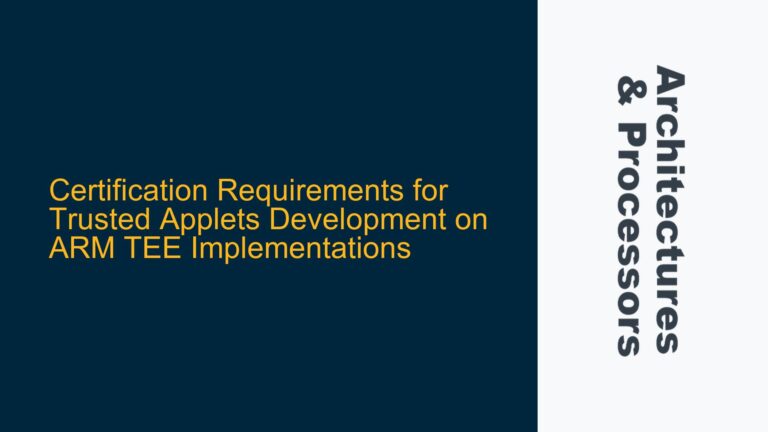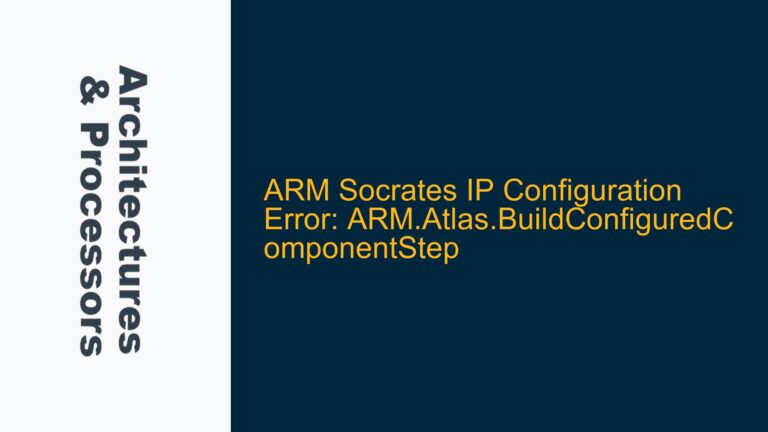Cortex-R5 Cache ECC Behavior in Write-Through Mode with Hardware Recovery
The Cortex-R5 processor, when configured in "Do not generate Aborts, force write-through, enable hardware recovery" mode, exhibits specific behavior regarding Error Correction Code (ECC) errors in its data cache. In this mode, the cache operates in a write-through configuration, meaning that any data written to the cache is simultaneously written to the lower-level memory (L2RAM in this case). This configuration has significant implications for ECC error handling.
When an uncorrectable ECC error is detected in the data cache, the cache line containing the error is invalidated. Since the data is also stored in the L2RAM due to the write-through policy, the correct data can be reloaded from the L2RAM into the cache. This mechanism ensures that no data is lost, and the system can continue operating without interruption. The hardware recovery feature further enhances system availability by allowing the processor to recover from such errors transparently.
However, the Cortex-R5 also provides an event bus that signals various events, including "data cache data RAM uncorrectable ECC" errors. This event is exported through the Performance Monitor Control Register (PMCR), specifically bit X, which controls the export of events. In the TMS570LC4357 microcontroller, this event is used by the Error Signaling Module (ESM) to generate a system error. The ESM, upon receiving this event, triggers a group 3 channel 9 error, which results in the assertion of the nERROR pin.
The key question is whether the "Do not generate abort, force write-through, enable hardware recovery" configuration prevents the ESM from generating a system error when an uncorrectable ECC error occurs in the data cache. Based on the documentation and the behavior of the Cortex-R5, it appears that even in this configuration, the event bus will still signal the uncorrectable ECC error, leading to an ESM group 3 channel 9 error. This behavior is independent of the cache’s ability to recover from the error using the correct data from the L2RAM.
Memory Hierarchy and ECC Error Propagation in Cortex-R5
The Cortex-R5 processor’s memory hierarchy plays a crucial role in understanding how ECC errors propagate and are handled. The processor features separate instruction and data caches, each with its own ECC protection. The data cache, in particular, is configured to operate in write-through mode in the scenario described. This means that every write operation to the data cache is immediately reflected in the L2RAM, ensuring data consistency between the cache and the main memory.
ECC errors in the data cache can arise from various sources, including transient faults caused by radiation or electromagnetic interference, as well as permanent faults due to aging or manufacturing defects. The Cortex-R5’s ECC mechanism is designed to detect and correct single-bit errors and detect double-bit errors. When a single-bit error occurs, the ECC logic corrects the error transparently, and the system continues operating without any interruption. However, when a double-bit (uncorrectable) error is detected, the cache line is invalidated, and the correct data is reloaded from the L2RAM.
The event bus in the Cortex-R5 is a critical component that signals various events to the rest of the system. One such event is the "data cache data RAM uncorrectable ECC" error. This event is exported through the PMCR register, which controls the export of performance monitoring events. When this event is exported, it is used by the ESM in the TMS570LC4357 to generate a system error. The ESM is a hardware module designed to handle and signal various error conditions in the system. It categorizes errors into different groups and channels, with group 3 channel 9 specifically designated for data cache ECC errors.
The interaction between the Cortex-R5’s cache ECC mechanism and the ESM is crucial for understanding the system’s behavior. Even though the cache can recover from uncorrectable ECC errors by reloading the correct data from the L2RAM, the event bus still signals the occurrence of the error. This signaling is independent of the cache’s recovery mechanism and is used by the ESM to generate a system error. Therefore, the "Do not generate abort, force write-through, enable hardware recovery" configuration does not prevent the ESM from generating a system error when an uncorrectable ECC error occurs in the data cache.
Implementing Cache ECC Error Handling and System Error Management
To effectively manage cache ECC errors and system error signaling in the Cortex-R5, it is essential to understand the interplay between the cache configuration, the event bus, and the ESM. The following steps outline the process of handling cache ECC errors and managing system errors in the TMS570LC4357 microcontroller.
First, ensure that the Cortex-R5’s data cache is configured in write-through mode with hardware recovery enabled. This configuration ensures that any data written to the cache is immediately written to the L2RAM, and uncorrectable ECC errors in the cache can be recovered by reloading the correct data from the L2RAM. This configuration is critical for maintaining data integrity and system availability in the presence of ECC errors.
Next, configure the PMCR register to export the "data cache data RAM uncorrectable ECC" event. This event is essential for signaling the occurrence of uncorrectable ECC errors to the ESM. The PMCR register’s bit X controls the export of this event, and it must be set to enable the event bus to signal the error to the ESM.
Once the event is exported, the ESM will receive the "data cache data RAM uncorrectable ECC" event and generate a system error. The ESM categorizes this error as a group 3 channel 9 error, which results in the assertion of the nERROR pin. This pin can be used to signal the error to external monitoring systems or to trigger a system reset.
To manage the system error generated by the ESM, implement an error handling routine that monitors the ESM’s status registers. The ESM provides detailed information about the type and source of the error, allowing the system to take appropriate action. For example, the system can log the error, trigger a system reset, or initiate a recovery procedure depending on the severity of the error and the system’s requirements.
In addition to handling the system error, it is essential to monitor the cache’s ECC error status. The Cortex-R5 provides registers that indicate the occurrence of ECC errors in the data cache. These registers can be used to track the frequency and type of ECC errors, providing valuable information for diagnosing and addressing potential issues in the system.
Finally, consider implementing additional error detection and correction mechanisms at the system level. For example, periodic memory scrubbing can be used to detect and correct ECC errors in the L2RAM before they propagate to the cache. Additionally, redundant memory configurations can be used to provide further protection against ECC errors.
By following these steps, the system can effectively manage cache ECC errors and system error signaling in the Cortex-R5, ensuring data integrity and system availability in the presence of ECC errors. The combination of cache configuration, event bus signaling, and ESM error handling provides a robust framework for managing ECC errors in the TMS570LC4357 microcontroller.
